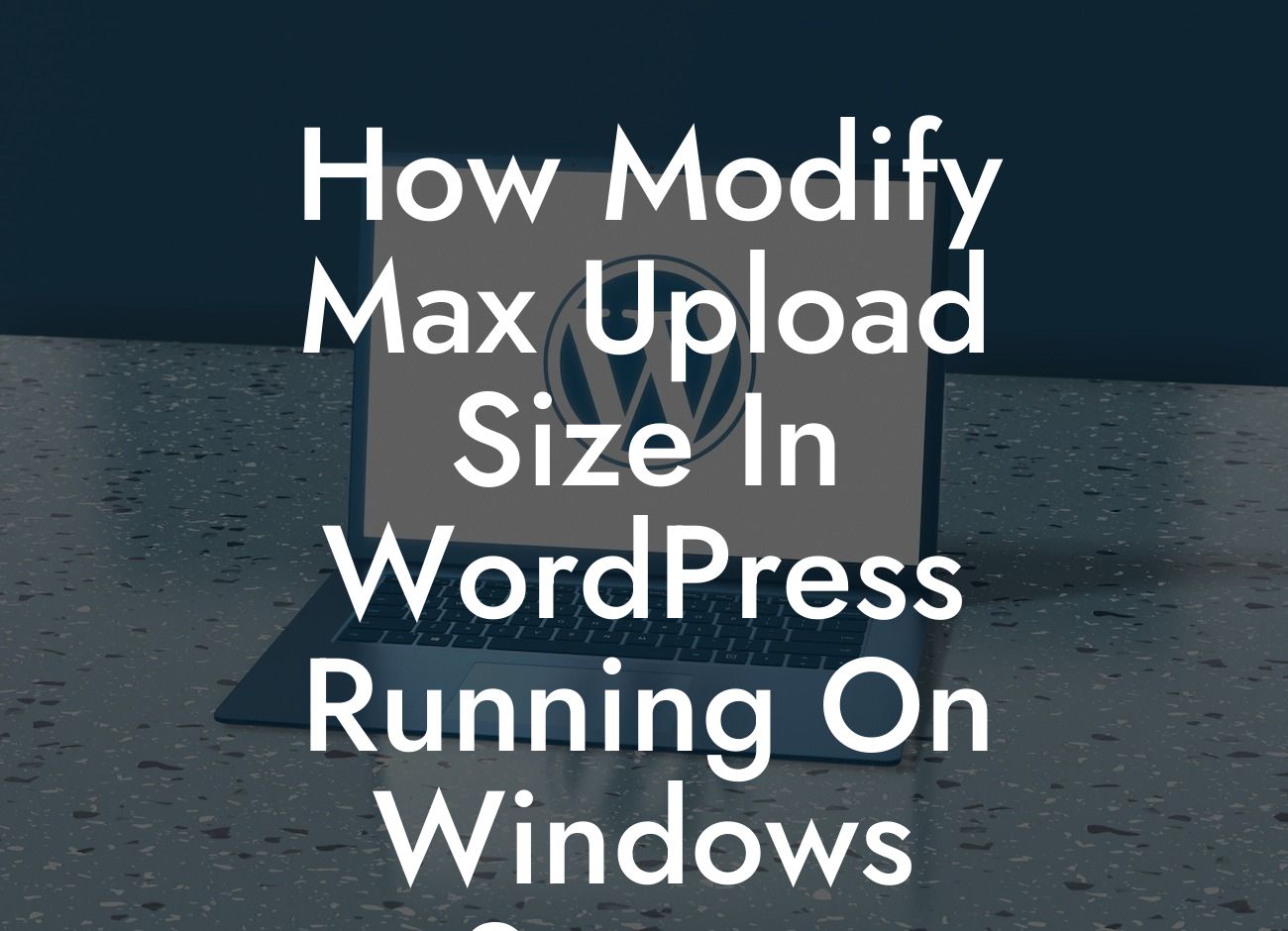We all know that WordPress is a versatile and powerful content management system for websites. However, there may come a time when you need to modify the maximum upload size in WordPress running on a Windows Server. Whether you want to upload large media files, install themes or plugins that exceed the default upload limit, or simply have full control over your website's capabilities, this guide is here to help. In this article, we will walk you through the process step by step, ensuring that you can expand your WordPress horizons and make the most out of your online presence.
Maximizing upload size in WordPress on Windows Server may sound daunting, but fear not! With the following steps, you'll be able to do it effortlessly:
1. Finding the wp-config.php file:
a. Access your WordPress installation directory on your Windows Server.
b. Locate the wp-config.php file, which holds important configuration settings.
Looking For a Custom QuickBook Integration?
2. Editing wp-config.php:
a. Create a backup of the wp-config.php file just in case.
b. Open the wp-config.php file in a text editor.
c. Look for the following line of code: define('WP_MEMORY_LIMIT', '32M');
d. Modify the '32M' value to your desired upload limit. For example, if you want to set the limit to 128MB, change it to define('WP_MEMORY_LIMIT', '128M').
3. Changing PHP.ini settings:
a. Access your Windows Server's PHP installation directory.
b. Locate the php.ini file and open it in a text editor.
c. Look for the following line of code: upload_max_filesize = 32M
d. Change the '32M' value to match the limit you set in the wp-config.php file.
4. Restarting your server:
a. After saving the changes made to both the wp-config.php and php.ini files, restart your Windows Server.
How Modify Max Upload Size In Wordpress Running On Windows Server Example:
Let's say you are a photographer with a WordPress website on a Windows Server. Your clients demand the ability to download high-resolution images directly from your site. However, the default 32MB upload size limit restricts you from doing so. By following the steps above, you can easily modify the maximum upload size to, let's say, 200MB, and provide your clients with an exceptional experience.
Congratulations! You have successfully learned how to modify the maximum upload size in WordPress running on a Windows Server. Now, you can take control of your website and unleash its full potential. Don't stop here; continue exploring other informative guides on DamnWoo and discover our awesome plugins designed exclusively for small businesses and entrepreneurs. With DamnWoo, you can transform your online presence, surpass expectations, and achieve unparalleled success. Don't forget to share this article with others who may find it helpful!













